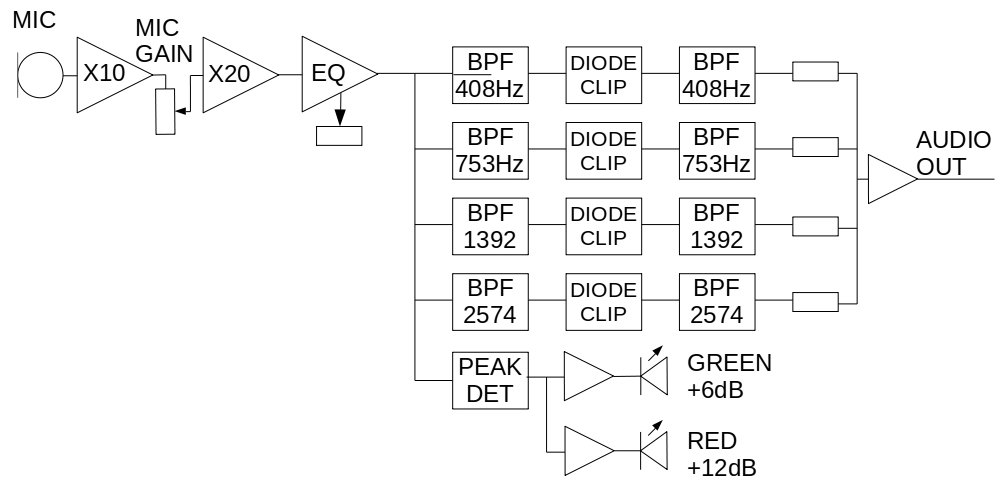2022 project – Speech processor

The club project for 2022, is a split band speech clipper. It was originally designed as part of a homebrew HF transceiver, but the PCB can be used in other projects, or can be built into a microphone. Rather than do the processing in DSP or at RF, this design splits the audio spectrum up into four channels and clips each individually. The harmonics produced by the clipper are rejected by a second set of filters and the signals are added back together. This clips the speech without degrading intelligibility.
The block diagram above shows how it works. The audio signal from the microphone is amplified and fed to a variable slope equaliser capable of boosting high or low audio frequencies. The audio signal is then fed into 4 bandpass filters, centred on 408Hz, 753Hz, 1392Hz and 2574Hz. Each drives it’s own clipper, limiting at a signal level of 300mV p-p. The clipped signals are then applied to another set of identical bandpass filters and summed with the appropriate phases. The audio output at the threshold of clipping is 290mV RMS.
The equaliser stage also drives a peak detector and comparators to operate LEDs to show +6dB or +12dB compression levels. This is useful to show the degree of clipping. For local “ragchewing” the 6dB LED should only light occasionally. For DX working, the +12dB LED should be on quite often. The microphone gain control (and how loudly the operator speaks!) is used to set the desired level of clipping.
An attenuator will be required on the clipper output if it is used to drive the microphone input of a transceiver.
Project organised and write-up by Andrew G0AMS

